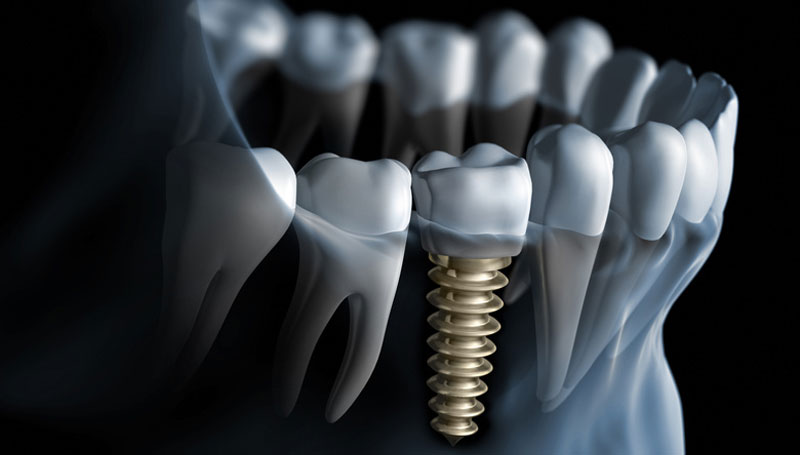The history of dental implants dates back to 1952. They are a now a standard procedure that can replace damaged tooth or teeth. These are simple metal posts that your dentist positions into your jawbone right under your gums. The dentist can mount the replacement tooth or teeth once they are in place.
What is a dental implant?
The dentist will usually fuse the implants to your jawbone to provide complete support for your artificial teeth. Unlike dentures that are commonly associated with old people, they do not shift or move inside your mouth. You can go back to your regular life as soon as the surgery heals. This means you will be able to eat, sip and talk usually post your dental implant procedures. Individual artificial crowns on these implants give a more natural feeling to them. They are more convenient than conventional replaceable dentures and bridges.
Why is implant a better option?
The biggest advantage of a dental implant is its non-intrusive nature. No additional preparation of adjacent teeth is required like in the case of conventional dentures. You will only have to visit the dentist for the fitting of the implant and the crafting of the crown. You just need healthy gums and jaw bone to receive dental implants. These are long-term solutions to cosmetic and correctional requirements.
Post-surgical care and maintenance
You need to commit to an adequate cleaning of your teeth to keep them in shape for years to come. Some implants last a lifetime, while others need replacement every 8-10 years depending on the nature of upkeep. You should visit your dentist at least once in 6 months after the surgery or as frequently as your dentists advise you to. They are mostly low maintenance solutions to broken tooth, chipped tooth, invasive cavities and other deformities.
What are the safest kinds of dental implants?
The American Dental Association considers to types of dental implants to be safe –
- Endosteal implants
This when your dental surgeon inserts the implants surgically into your jawbone. The second surgery comes after the first heal, and this one connects the post to the first implant. The dentist then places an artificial tooth on top of the post.
- Subperiosteal implants
When a dentist surgically fits a metal frame onto the jawbone, it is a subperiosteal implant. Once the gum heals, the frame fixes itself to the jawbone. The posts attached to this metal frame protrude through the gums. The dentist then attaches the artificial teeth to these posts.
Dentists recommend the second solution to those who need great replacement or correctional surgery. Replacing each tooth will take a much longer time if you require surgery on 5-6 teeth at a stretch. Both the implants offer a secure base for single replacement teeth in patients.
Right now, dental surgery is about both functionality and aesthetics. Most of these dental procedures do not involve invasive surgeries at all. They are easy, fast and permanent solutions for long-standing dental problems.
Author Bio: Jaime Burke is a dental assistant who has been working at the leading dental clinics in Utah. To find the best dentist in town, read Jaime’s blogs and follow him around on social media.
Related Posts













One thought on “Dental Implants: Say Hello to Your New Permanent Teeth”
Comments are closed.